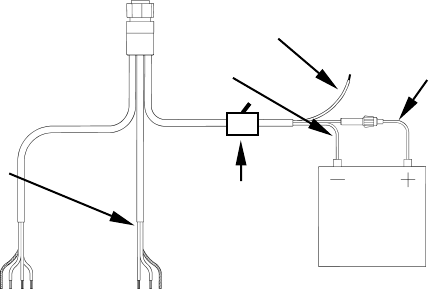
38
In saltwater environments we recommend you connect the power
cable to the auxiliary power switch included in most boat designs.
If that results in electrical interference, or if such a switch is not
available, we recommend connecting direct to the battery and in-
stalling an inline switch. This will let you shut off power to the
power cable when the unit is not in use. When you are not using
the unit, you should always shut off power to the power cable, es-
pecially when the power cable is disconnected from the unit.
If possible, keep the power cable away from other boat wiring, especially
the engine's wires. This will provide the best isolation from electrical
noise. If the cable is not long enough, splice #18 gauge wire onto it. The
power cable has two wires, red and black. Red is the positive lead, black
is negative or ground. There is also a white wire to power an optional
external speaker for some units. Make sure to attach the in-line fuse
holder to the red lead as close to the power source as possible.
For example, if you have to extend the power cable to the battery or
power buss, attach one end of the fuse holder directly to the battery or
power buss. This will protect both the unit and the power cable in the
event of a short. It uses a 3-amp fuse.
Power connections for the unit.
NOTE:
If you're powering a NMEA 2000 buss, you will attach both the
NMEA 2000 Power cable and the unit's Power Supply cable to the
boat's battery. To attach the NMEA 2000 Power cable, connect the
red wire to battery's + and black and shield wires to battery's –.
12 volt
battery
Black wire
Red wire with
3 amp fuse
To unit
Data Cable
Optional power off
switch for salt-
water installations
NMEA 2000 Power Cable
To power a
NMEA 2000
buss, also
connect
NMEA 2000
Power cable
to the boat's
battery.
White external speaker wire
(not used by this unit)


















